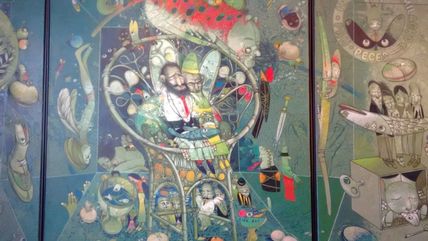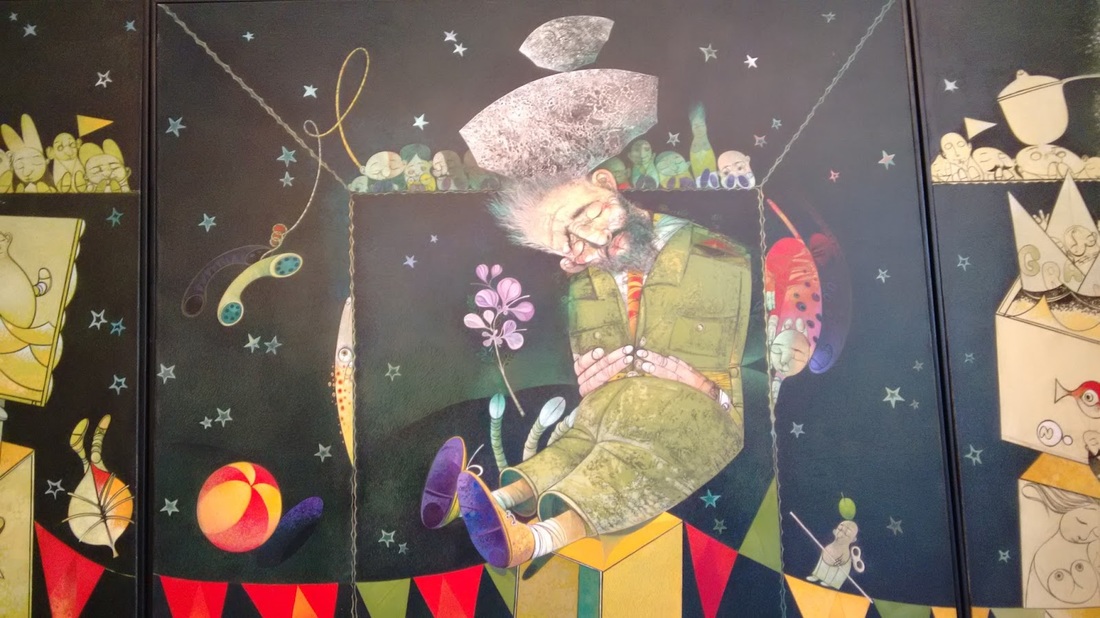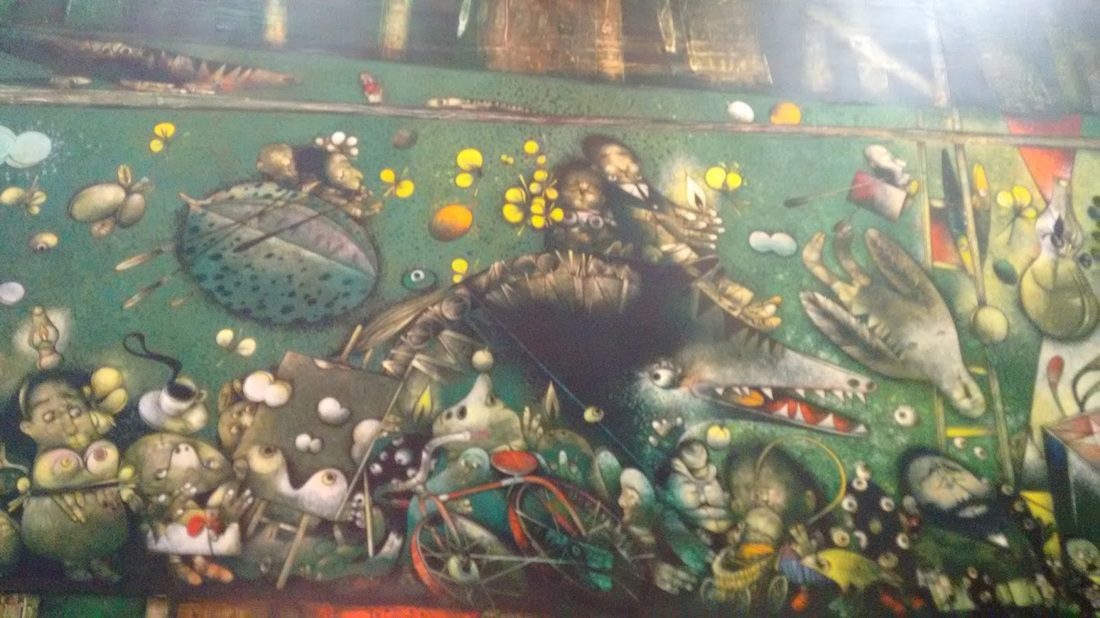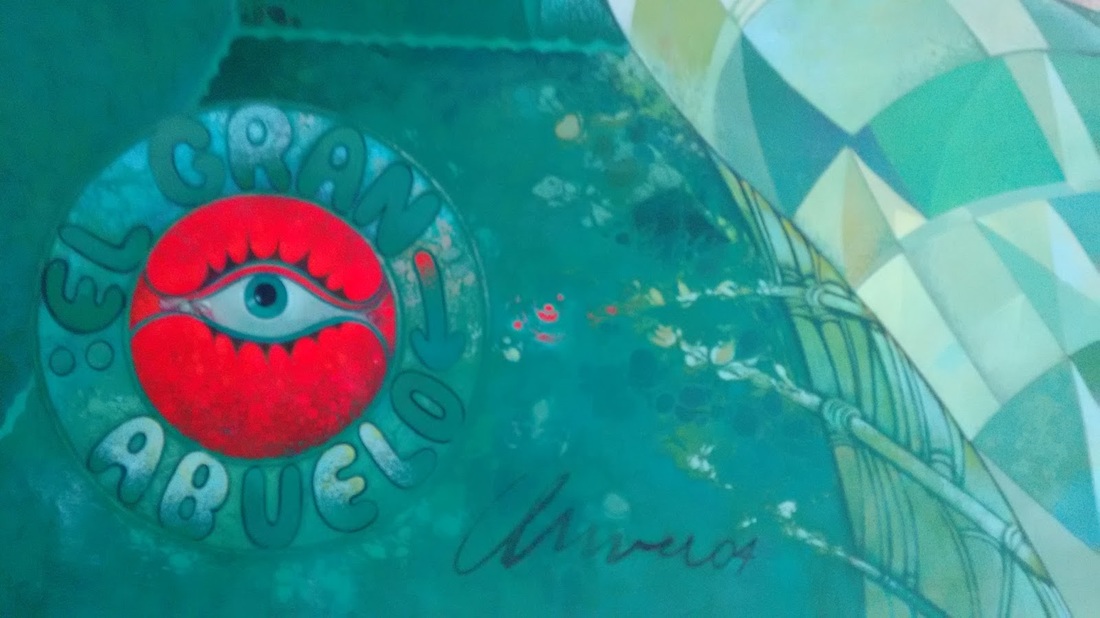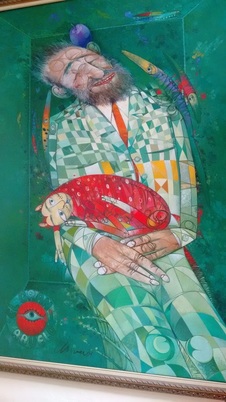- Home
- About
-
Lessons
-
Teaching with Music
>
- Song warm-up lesson plans, setup, procedure, and exams
- How to teach "Tú sí sabes quererme" by Natalia Lafourcade
- How to teach "La Carretera" by Prince Royce
- How to teach "Latinoamérica" by Calle 13
- How to teach "Prohibido Olvidar" by Rubén Blades
- How to teach "Traidora" by Gente de Zona
- How to teach "La Bicicleta" by Shakira and Carlos Vives
- How to teach "Culpa al Corazón" by Prince Royce
- How to teach "Déjà Vu" by Prince Royce and Shakira
- How to teach "Amor de Mis Amores" by Natalia LaFourcade
- How to teach "Despacito" by Luis Fonsi and Daddy Yankee
- Teaching with TPRS >
- Teaching with Tech >
- Teaching with Film >
- Teaching Social Justice >
-
Teaching with Music
>
-
Service Learning
-
Travel
- Resources
- Tutoring
- Blog
- Contact
Pedro Pablo Oliva and "The Great Blackout"
On arrival we were met by Pedro’s brother, who gave us an unoffical tour of the gallery as we waited for our Pedro’s niece to arrive. Pedro’s brother was in his 80’s, and had some incredible stories to tell about their family life growing up in Cuba before, during, and after the revolution. He regaled us with stories of Pedro’s inner guilt regarding José Martí, Cuba’s national hero. As children, Pedro and his brother were told that by their grandfather that he was the soldier that killed José Martí in battle. According to Pedro’s brother (our guide), due to the guilt that this presented to the boys as children and through their young lives, Pablo continues to paint José Martí in each of his paintings, in an effort to assuage this guilt that he feels for the fall of Cuba’s national hero.
|
As soon as Pedro’s niece arrived, the tour officially started, and we were explained in detail each of the aspects of the gigantic piece, “El Gran Apagón” or “The Great Blackout”. Known as Cuba’s “La Guernica”, “El Gran Apagón” depicts a surrealist view of the distrust and fear associated with 1990’s Cuba after the fall of the Soviet Bloc in 1989. As the country plunged into darkness, it lost resources and power, as well as information and connections to the world outside of the island. During this time, Fidel Castro ordered for large bomb shelters to be built underground, in the event of the feared raid from the United States that was largely thought to be imminent. Not only was this a blackout in the literal sense, but also in the figurative sense, in that intellect and information were largely in a blackout in this time as well.
|
|
One of the highlights of this visit was the personal feel to what could have been a cold and impersonal tour. From being invited in to Pedro’s home, being regaled by stories of boyhood during the revolution from Pedro’s brother, or the warm welcome we received from Pedro’s niece, we left Pedro Pablo Oliva’s house with a warm feeling of inclusion into a movement much bigger than ourselves.
|
|
This website is a participant in the Amazon Services LLC Associates Program, an affiliate advertising program designed to provide a means for us to earn fees by linking to Amazon.com and affiliated sites.
|
- Home
- About
-
Lessons
-
Teaching with Music
>
- Song warm-up lesson plans, setup, procedure, and exams
- How to teach "Tú sí sabes quererme" by Natalia Lafourcade
- How to teach "La Carretera" by Prince Royce
- How to teach "Latinoamérica" by Calle 13
- How to teach "Prohibido Olvidar" by Rubén Blades
- How to teach "Traidora" by Gente de Zona
- How to teach "La Bicicleta" by Shakira and Carlos Vives
- How to teach "Culpa al Corazón" by Prince Royce
- How to teach "Déjà Vu" by Prince Royce and Shakira
- How to teach "Amor de Mis Amores" by Natalia LaFourcade
- How to teach "Despacito" by Luis Fonsi and Daddy Yankee
- Teaching with TPRS >
- Teaching with Tech >
- Teaching with Film >
- Teaching Social Justice >
-
Teaching with Music
>
-
Service Learning
-
Travel
- Resources
- Tutoring
- Blog
- Contact
